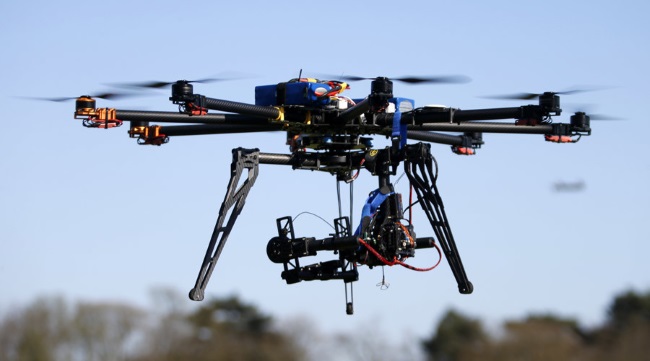The basic question for technology is always the same: just because we have the ability to do something, should we? Drones, or unmanned aerial vehicles, are a fact of life and are not going away, and they can be used for surveillance and even active and passive policing operations on populations — but should they be used that way? Drones can certainly be used for good reasons, such as commercial applications like delivering goods and providing services. For example, they can be used for safety inspections (aircraft, bridges, buildings, oil wells, rail lines), delivery of packages and mail (Amazon, DHL, Walmart), farming (to survey fields for crop conditions), providing security (park services in Africa considering to help track/catch poachers), and even the possibility of assisting in building trades (one company is considering using it to help to build walls). According to Juniper Research , drone sales are expected to jump from $261 million in 2015 to $481 million in 2016, and 48% of that increase will come from agricultural applications.

Currently, the only U.S. federal regulations guiding the use of drones are provided by the FAA, which governs the airspace and regulates all aircraft flights. That includes piloted and radio-controlled aircraft. We could talk about the completely idiotic events that occur when privately-owned drones are used to do stupid and even dangerous things, requiring us to get protection from ourselves via law enforcement agencies. However, we have recently arrived at the point where society needs to consider how to prevent the misuse of drones by law enforcement agencies. Presently, there is a proposal in front of Congress that would force manufacturers to implement geo-fencing technology for their drones. This geo-fencing targets private owners and would limit where private, unauthorized drones can fly, using built-in software, firmware, and GPS tracking. It seems to me that we need that capability implemented for local police agencies, too (unless they get legal permission first). We need to consider how to control the use of drones by law agencies and we need to have this discussion before deadly force or misuse of the technology happens. These talks should be about the limits on how drones can be used, what happens with the data/images recorded by the drones, and how to prevent the use of lethal and non-lethal weapons (are rubber bullets and Tasers really non-lethal?) on these tiny, flying wonders that can very easily hide in plain sight. It’s time to look closely into the eyes of drones and see what we need to do to protect ourselves from our own invention.
Advertisement





